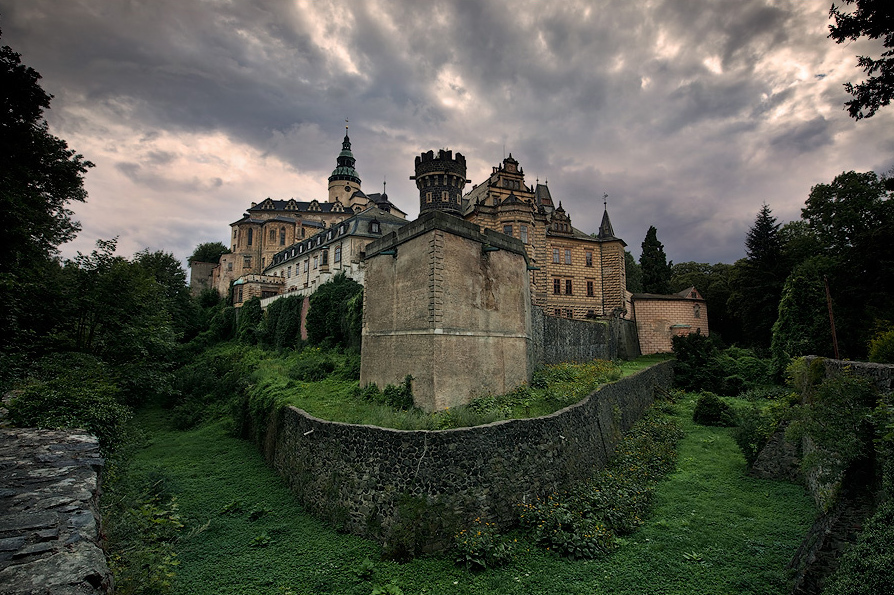Thought it might be cool to share pictures of medieval castles from the in-game time period. I mean, Europe is littered with them so chances are that there are some close to where you live.
I’ll get this thread started by sharing some info and pictures about Bohus Fästning (Fortress of Bohus if I translate it to English) located just north of Gothenburg on the Swedish westcoast. If you travel north from Gothenburg on E45 you can’t miss it.
Bohus Fästning
Background
The build of the castle started in 1308 and the purpose was to protect the southern borders of Norway. In 1308 this was border country between Sweden and Norway. The Scandinavian countries looked very different in the 14th century than what the do today. Here is a map that shows the outlines of the countries in the mid-1300’s. (Note that Gothenburg didn’t exist until 1621 eventhough there had been fortifications and dwellings there since the 1400’s. The very first Gothenburg was burnt to the ground by Danish troops in 1611.)
If we look at the area where the castle was built in more detail we immediatly notice the strategic position:
On the above map yellow is Norway, green is Sweden and brown is Denmark. As you can see at the arrow marked “Bohus” on the map, the castle was built on an island where the Nordre and Göta rivers meet. Göta älv had been a important trade route since the Vikings and if you could control the shipping up and down the river you had a lot of influence over the area. Even today the ruins totally dominate the landscape:
The earliest construction was made of wood but over the years a stone castle made of granite emerged. In the beginning of the 1400’s the castle affected the Swedish economy in the region immensly. During the centurys to follow the castle ownership changed between Norway, Sweden and Denmark because of war, feuds, civil war, marriages between royal children and politics. All in all, Bohus Fästning was laid under siege 14 times without ever surrendering.
The castle was extended over the years and the shape we see today is from the 1600’s. Below are plans from the extensions made in 1697:
By the mid 1700’s the fortress had lost it’s importance. Gothenburg, which at the time was a walled and fortified city, had existed for more than 100 years and the borders had moved placing Bohus within Sweden. Both Marstrands and Älvsborgs fortresses was also fully operational closer to the outer borders. You have to keep the expansion in mind that Sweden made through military power during several hundred years until we got our current borders in 1905 (yellow in the maps represents Sweden).





Left to decay
The last garrison of Bohus Fästning left the castle in 1786 and parts of it was demolished to make use of the building materials elsewhere and it was left to decay. In 1935 it became a national building monument and parts of it was restored to be able to accomodate visitors. Today the castle is open for visitors between April and September and there are a lot of concerts, weddings, and other venues taking place within the castle walls. If you happen to be in the area I really recommend a visit. For more info about the castle visit: http://www.bohusfastning.com/en/
Last but not least some pictures of the castle as it looks today:







































